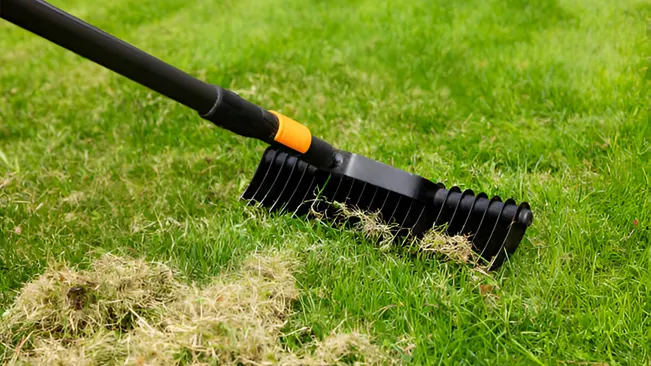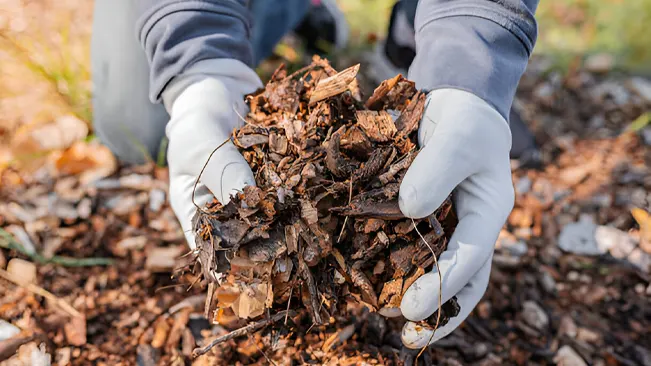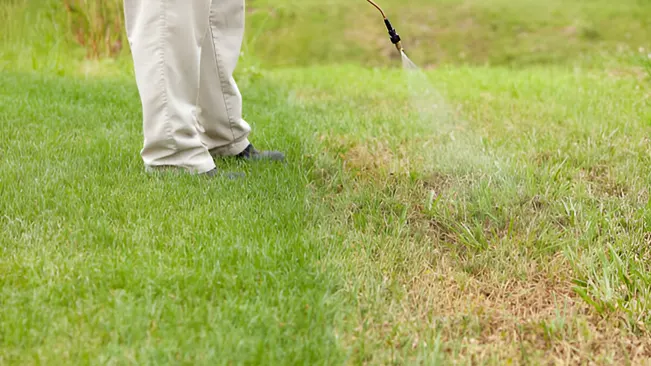How to Kill Grass Around Trees
- September 19, 2024
- 0 comment
Grass around trees maintaining a healthy garden or landscape requires regular attention, especially when it comes to trees. One common challenge faced by homeowners and gardeners alike is the grass growing around the base of trees. While grass may look aesthetically pleasing, it can actually compete with trees for nutrients, water, and sunlight, slowing down the tree’s growth.

Knowing how to effectively kill grass around trees can improve tree health, conserve resources, and create a more polished landscape. This guide will walk you through various methods for removing grass around trees safely and effectively, while ensuring the longevity of your trees.
Why Is It Important to Remove Grass Around Trees?
Before diving into the techniques, it’s essential to understand why killing grass around trees is beneficial. Trees and grass are both plants, but they have different needs. Here are some key reasons to remove grass from around the base of your trees:
- Competition for Nutrients: Grass and tree roots often compete for the same essential nutrients in the soil, such as nitrogen and phosphorus. By removing the grass, you ensure that the tree has access to more nutrients, leading to healthier growth.
- Water Absorption: Trees need a significant amount of water to thrive, especially young trees. Grass growing around the base can absorb a large portion of the water intended for the tree, potentially leaving the tree roots dry.
- Reduced Pesticide and Fertilizer Use: Grass maintenance often involves the use of fertilizers, which can harm tree roots. By removing grass, you reduce the need for lawn treatments around your tree’s base.
- Aesthetic Appeal: Clearing grass around trees gives your landscape a more professional and manicured look.
Understanding Different Methods for Killing Grass Around Trees
There are several ways to kill grass around trees, ranging from manual removal to using chemicals. Each method has its own set of advantages and disadvantages, and the right one for you will depend on the type of tree, the size of the grassy area, and personal preferences.
1. Manual Removal of Grass
One of the most straightforward ways to eliminate grass around a tree is through manual removal. This method is environmentally friendly and doesn’t require chemicals, but it can be labor-intensive, especially if you’re dealing with a large area.

Steps for Manual Removal:
- Mark the Area: Use a garden hose or string to outline a circle around the tree. The size of the circle should be based on the tree’s canopy width, or at least 2-3 feet away from the trunk.
- Loosen the Soil: Use a shovel or garden fork to gently loosen the soil where the grass is growing. This will make it easier to remove the grass along with its roots.
- Pull the Grass: Carefully pull up the grass by hand or use a sharp garden tool. Ensure you remove the roots to prevent regrowth.
- Monitor for Regrowth: After removing the grass, monitor the area for any regrowth. Manually pull out any new grass that appears.
2. Using Mulch to Suppress Grass Growth
Mulching is an excellent long-term solution for killing grass and keeping it from returning. Not only does mulch block sunlight and hinder grass growth, but it also helps retain moisture in the soil and regulate soil temperature, benefiting the tree.

Steps for Using Mulch:
- Clear the Area: Begin by manually removing the grass or applying a non-toxic herbicide to kill it. Once the grass is removed, prepare the area for mulching.
- Apply a Layer of Mulch: Spread a 2-3 inch layer of organic mulch (such as wood chips, bark, or compost) around the tree. Make sure to leave a small gap (about 2 inches) between the mulch and the tree trunk to prevent rot and pests.
- Reapply as Necessary: Mulch decomposes over time, so reapply it as needed to maintain an effective layer for suppressing grass growth.
3. Using Herbicides to Kill Grass
Herbicides can be an effective option, especially if you have a large area to clear or need quick results. However, it’s important to choose the right type of herbicide and use it carefully to avoid damaging the tree.

Types of Herbicides:
- Glyphosate-based Herbicides: These are non-selective herbicides that kill all plants, including grass. They are effective but need to be applied with caution around trees.
- Selective Herbicides: These are designed to target specific types of plants, like grasses, while leaving other plants unharmed.
Steps for Using Herbicides:
- Choose the Right Herbicide: Select a product that is safe for use around trees. Avoid using broad-spectrum herbicides directly near the trunk.
- Apply Herbicide: Follow the manufacturer’s instructions for mixing and application. Apply the herbicide directly to the grass, avoiding any contact with the tree’s bark or roots.
- Monitor the Area: It may take a few days to see results. Once the grass turns brown and dies, you can remove it manually or let it decompose naturally.
- Reapplication: Herbicides may need to be reapplied periodically, especially for persistent grass or if you notice new growth.
4. Solarization: Using the Sun to Kill Grass
Solarization is an eco-friendly method that uses the sun’s heat to kill grass. This method works best during hot summer months when the sun is at its peak.

Steps for Solarization:
- Mow the Grass: Start by mowing the grass as short as possible to allow maximum exposure to sunlight.
- Cover the Area: Lay a clear plastic sheet (2-4 millimeters thick) over the grassy area. Secure the edges with stones or garden staples to keep it in place.
- Leave for Several Weeks: Let the plastic sheet remain in place for 4-6 weeks. The heat trapped under the plastic will kill the grass and its roots.
- Remove and Prepare: Once the grass is dead, remove the plastic and prepare the soil for mulching or planting.
5. Using a Weed Barrier Fabric
Weed barrier fabric is a synthetic material designed to block grass and weeds while allowing water and nutrients to pass through to the tree roots. It’s a good option for long-term suppression of grass growth around trees.

Steps for Using Weed Barrier Fabric:
- Clear the Area: Remove the grass manually or with a herbicide before installing the fabric.
- Cut and Place the Fabric: Cut the fabric to fit around the tree, leaving space around the trunk. Lay the fabric flat on the soil, securing it with landscape staples.
- Cover with Mulch: To improve the appearance and further suppress grass growth, cover the fabric with 2-3 inches of mulch.
Common Mistakes to Avoid When Killing Grass Around Trees
While the methods above are effective, there are a few common mistakes that can damage your trees if not avoided:
- Over-mulching: Applying too much mulch, especially if it touches the trunk, can lead to moisture buildup, which can rot the tree’s bark and invite pests.
- Incorrect Herbicide Use: Using too much herbicide or applying it too close to the tree can damage the tree’s roots and lead to long-term harm.
- Shallow Grass Removal: If you don’t remove grass roots during manual removal, it’s likely to grow back, forcing you to repeat the process.
Conclusion
Killing grass around trees is a task that requires some planning and care, but the benefits to your trees’ health and the overall appearance of your landscape are worth it. Whether you choose manual removal, mulching, herbicides, solarization, or a weed barrier fabric, make sure to select the method that best fits your specific needs and the environment of your garden.
Frequently Asked Questions (FAQ)
- Can killing grass around trees harm the tree itself?
Killing grass around trees, when done properly, will not harm the tree. In fact, removing grass helps reduce competition for nutrients, water, and sunlight, which can benefit the tree’s overall health. - What is the safest method to remove grass around young trees?
The safest method for young trees is manual removal or mulching. Both techniques avoid the use of chemicals that could potentially harm the delicate roots of young trees. - How does mulching help in killing grass around trees?
Mulching suppresses grass growth by blocking sunlight. It also helps retain moisture, improve soil fertility, and regulate soil temperature around the tree’s roots, promoting healthier growth. - How often should I replace the mulch around my tree?
Mulch generally decomposes over time and should be replenished once a year or whenever it appears to thin out. Keep the layer 2-3 inches thick for optimal grass suppression and tree health. - Can I use vinegar to kill grass around trees?
Yes, vinegar can be used as a natural herbicide to kill grass. However, it can also damage tree roots if over-applied, so it’s best to use it sparingly and away from the tree trunk. - Will removing grass around trees improve tree growth?
Yes, removing grass reduces competition for water and nutrients, allowing the tree to absorb more resources, which can lead to healthier growth and development. - What is the recommended distance to clear grass around a tree?
It’s best to clear grass up to the tree’s drip line, which is the area beneath the tree’s canopy. For smaller trees, 2-3 feet around the base is typically sufficient. - Should I use a weed barrier fabric under mulch to prevent grass regrowth?
Using a weed barrier fabric can be effective in preventing grass regrowth. However, it’s important to choose a breathable material that allows water and nutrients to reach the tree roots. - Can herbicides harm my tree if used near the roots?
Yes, certain herbicides can damage tree roots if not applied correctly. Always use tree-safe herbicides and follow the manufacturer’s instructions to avoid harming the tree. - How long does it take to solarize grass using plastic sheets?
Solarization typically takes 4-6 weeks during the hottest months of the year. The heat trapped under the plastic will kill the grass and its roots without damaging the tree.

Jack Williams
Forestry AuthorI'm Jack Williams, Jack Williams, my expertise in welding and generator technologies extends beyond traditional boundaries. With over 13 years of experience, I have honed my skills in a range of heavy-duty equipment, focusing particularly on welding and power generation. My passion for nature and commitment to ecological sustainability inform my approach to work. I emphasize safety, efficiency, and staying current with technological advancements. Beyond my technical skills, I am dedicated to sharing knowledge and fostering environmental awareness, aiming to contribute positively to both the welding and generator operation industries.





Leave your comment